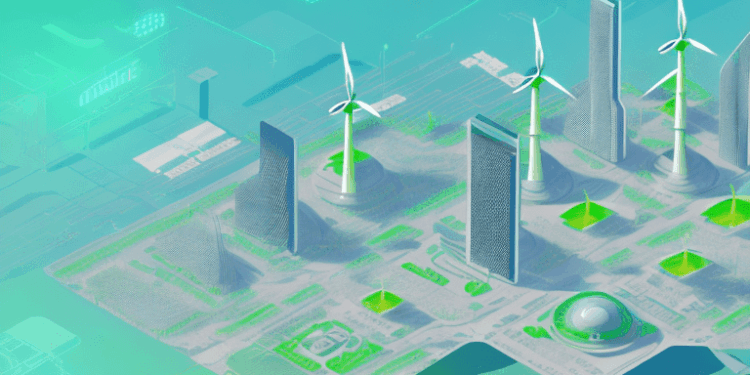In the face of a global climate crisis, a new wave of technology is emerging not just to solve problems, but to heal the planet. Sustainable technology, or “green tech,” is at the forefront of this movement, offering innovative solutions that minimize environmental impact, conserve resources, and pave the way for a more resilient future. This is not a fleeting trend; it is a fundamental shift in how we power our world, produce our goods, and manage our resources. This comprehensive article delves into the profound impact of sustainable tech, exploring the groundbreaking innovations in energy, materials, and infrastructure, the economic and social benefits of this green revolution, and the critical role it plays in securing a habitable future for generations to come.
For the better part of two centuries, industrial progress was synonymous with resource exploitation and pollution. The era of fossil fuels brought unprecedented prosperity, but at a staggering environmental cost. The consequences—rising global temperatures, extreme weather events, and ecological degradation—have made it clear that our current trajectory is unsustainable. The challenge is immense, but the human capacity for innovation is proving to be up to the task. What started as a niche field for environmentalists has now become a central focus for engineers, scientists, and entrepreneurs worldwide. From solar panels that cover our rooftops to advanced batteries that power our electric vehicles, green technologies are moving from the laboratory to the mainstream, proving that economic growth and environmental stewardship can go hand-in-hand.
The global investment in sustainable technology is skyrocketing, with governments and corporations recognizing that a green future is not just an ethical choice, but a smart financial one. The cost of renewable energy has plummeted, making it competitive with, and often cheaper than, fossil fuels. The efficiency of green products is constantly improving, and the public demand for environmentally friendly goods and services is at an all-time high. This is more than just a technological shift; it is a societal one, where sustainability is becoming a core value that drives consumer choice and corporate strategy. As we continue to develop and scale these green innovations, we are not just mitigating climate change; we are building a new, more efficient, and more equitable world.
The Pillars of Sustainable Tech

The green revolution is powered by a diverse set of technologies, each addressing a critical aspect of our environmental impact.
A. Renewable Energy
The transition from fossil fuels to renewable energy is the cornerstone of a sustainable future. Solar panels, once expensive and inefficient, have become a mainstream solution for generating clean electricity. Advances in photovoltaic cell technology have made them cheaper and more effective, enabling everything from massive solar farms to residential rooftop installations. Similarly, wind turbines have grown in size and efficiency, with both onshore and offshore wind farms now providing a significant portion of our global energy mix. Hydropower, geothermal, and tidal energy are also contributing to this shift, creating a diversified and resilient energy grid that is no longer dependent on finite, polluting resources.
B. The Storage Revolution
The Achilles’ heel of renewable energy has long been its intermittency—the sun doesn’t always shine, and the wind doesn’t always blow. The energy storage revolution is solving this problem. Advances in battery technology, particularly lithium-ion, have made it possible to store excess energy generated during peak hours and release it when needed. This is not only essential for powering electric vehicles but also for stabilizing the grid and ensuring a constant supply of power from renewable sources. Furthermore, researchers are exploring next-generation storage solutions, such as solid-state batteries, hydrogen fuel cells, and gravity-based storage systems, which promise to be even more efficient and sustainable.
C. Sustainable Materials and the Circular Economy
The traditional “take-make-dispose” model of manufacturing is a primary driver of waste and pollution. Sustainable materials and the principles of the circular economy are challenging this paradigm. Scientists are developing new biodegradable plastics from plant-based sources, as well as innovative composites and alloys that are lighter, stronger, and more durable. The goal of a circular economy is to eliminate waste by designing products that can be reused, repaired, and recycled at the end of their life cycle. This involves not only creating better materials but also building a new infrastructure for recycling and re-manufacturing that turns waste into a valuable resource.
D. Smart Grids and Energy Efficiency
Generating clean energy is only part of the solution; using it efficiently is equally important. Smart grids are a critical piece of the puzzle. These intelligent power networks use digital technology to monitor and manage the flow of electricity in real-time, optimizing energy distribution and reducing waste. Smart grids can automatically adjust power based on demand, integrate decentralized renewable energy sources, and provide consumers with data to help them manage their energy consumption. This focus on energy efficiency—through smart appliances, better building insulation, and intelligent power management—is a low-cost, high-impact way to reduce our overall carbon footprint.
The Broader Impact in Economic and Social Benefits

The shift to sustainable technology is not just an environmental necessity; it is a powerful engine for economic growth and social progress.
A. Economic Growth and Job Creation
The green tech sector is a major source of economic growth and job creation. The construction and maintenance of solar farms, wind turbines, and smart grids require a skilled workforce, creating new opportunities in engineering, manufacturing, and technical services. The development of electric vehicles and sustainable materials is fueling innovation and creating new industries. This growth is not confined to a single country; it is a global phenomenon, with nations around the world competing to be leaders in the green economy.
B. Improved Public Health
The link between environmental pollution and public health is undeniable. The combustion of fossil fuels releases harmful pollutants into the air, leading to respiratory diseases, cardiovascular problems, and other health issues. By transitioning to clean energy and electric vehicles, we can drastically reduce air pollution in our cities, leading to a significant improvement in public health. This means fewer hospital visits, lower healthcare costs, and a higher quality of life for everyone.
C. Energy Independence and National Security
A nation’s dependence on foreign sources of oil and gas creates a significant vulnerability. By investing in domestic renewable energy sources, countries can achieve greater energy independence, insulating their economies from the volatility of global energy markets and enhancing their national security. This shift to a decentralized, domestically sourced energy grid also makes the power supply more resilient to natural disasters and geopolitical conflicts.
D. Greater Accessibility and Equity
The cost of renewable energy is falling, making it accessible to a wider range of people, particularly in developing countries where access to a traditional power grid is limited. Decentralized solar and wind power can provide electricity to remote villages, enabling access to education, healthcare, and digital connectivity. This democratization of energy is a powerful tool for reducing poverty and promoting global equity. The circular economy, by reducing waste and creating value from recycled materials, also offers new economic opportunities for communities around the world.
Overcoming Challenges and Scaling Innovation
Despite the remarkable progress, the green tech revolution is not without its challenges. Overcoming these hurdles is critical to realizing a truly sustainable future.
A. The Challenge of Infrastructure
The transition to a fully renewable energy grid requires a massive investment in new infrastructure. This includes building new transmission lines to carry electricity from solar and wind farms, expanding charging networks for electric vehicles, and upgrading our homes and buildings to be more energy-efficient. This is a multi-trillion-dollar undertaking that requires strong political will and long-term strategic planning.
B. Policy and Regulation
Government policies and regulations play a crucial role in accelerating the adoption of sustainable technology. This includes providing incentives for renewable energy, setting clear emissions standards for vehicles, and investing in research and development. The lack of a consistent and supportive policy framework can create uncertainty for investors and slow the pace of innovation.
C. The E-Waste Problem
As we transition to a green tech future, we are also creating a new problem: e-waste. The rapid pace of innovation means that solar panels, batteries, and other green tech products have a finite lifespan. Developing an effective and sustainable system for recycling these products and recovering their valuable materials is a critical challenge. The circular economy principles must be applied to green tech itself to ensure the entire lifecycle is sustainable.
D. Global Collaboration
Climate change is a global problem that requires a global solution. The development and deployment of sustainable technology must be a collaborative effort between nations. This includes sharing research, harmonizing standards, and providing financial support to developing countries that are on the front lines of the climate crisis. International cooperation is not an option; it is a necessity.
Conclusion
In conclusion, the rise of sustainable technology marks a profound and irreversible shift in our approach to global challenges. It is a powerful narrative of human ingenuity, where the very tools that once drove environmental degradation are now being repurposed and redesigned to heal the planet. The green revolution is built on the pillars of renewable energy, advanced energy storage, a circular economy, and intelligent infrastructure, each working in synergy to create a more efficient, less wasteful, and more resilient world. This is not just a technological change; it is an economic and social transformation that is creating new jobs, improving public health, and fostering greater energy independence and global equity.
The journey ahead is not without its challenges. The scale of the required infrastructure investment, the need for supportive and consistent policy, and the ethical considerations of a new wave of technological waste are significant hurdles that must be overcome. However, the momentum is undeniable. The cost of renewable energy continues to fall, the demand for green products continues to rise, and the commitment to a sustainable future is becoming a core value for a new generation.
The true legacy of sustainable technology will not be measured in the number of solar panels installed or the number of electric cars on the road. It will be measured in our ability to build a world where progress and prosperity are not achieved at the expense of the environment, but in harmony with it. The green tech revolution is more than a solution to a problem; it is a blueprint for a better future, one where innovation serves not just our needs, but the needs of the planet that sustains us. It is the dawn of a new era of progress, powered by the brilliance of human ingenuity and the unwavering commitment to a sustainable world.



